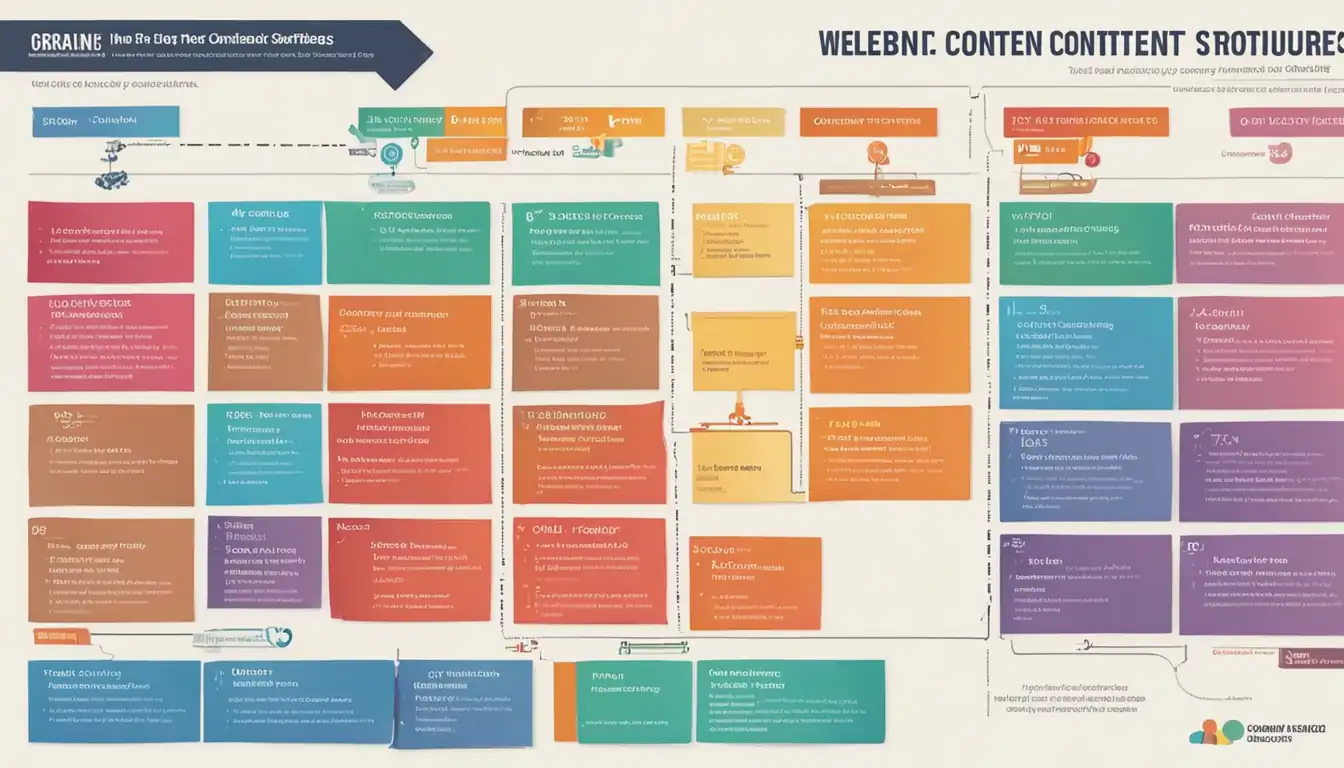Mastering SEO Content Audits for Enhanced Website Performance

Welcome to the world of SEO content audits, where you can unlock the potential of your website and boost its performance. In this post, we will delve into the art of mastering SEO content audits to enhance your online presence and drive more traffic to your site. Whether you're a seasoned SEO expert or just starting out, this guide will provide you with valuable insights and practical tips to take your website to the next level.
Understanding SEO Content Audits
What is an SEO Content Audit?
An SEO content audit is a comprehensive analysis of all the content on a website to evaluate its performance in terms of search engine optimization (SEO) and user engagement. This involves assessing the quality, relevance, and effectiveness of each piece of content on the site.
Why Conduct an SEO Content Audit?
- Identify underperforming content: By conducting an SEO content audit, you can pinpoint which pages or posts are not driving traffic or conversions.
- Improve search engine rankings: By optimizing existing content or removing outdated material, you can enhance your website's visibility in search engine results.
- Enhance user experience: A well-executed content audit can help improve user experience by ensuring that visitors find valuable and relevant information on your site.
- Stay ahead of competitors: Regularly auditing your content allows you to stay competitive in the ever-evolving digital landscape.
Preparing for Your SEO Content Audit

Before diving into your SEO content audit, it's essential to properly prepare. This will ensure that you have a structured approach and can effectively analyze your website's performance.
Tools and Resources Needed
To conduct a successful SEO content audit, you will need the right tools and resources at your disposal. Some essential tools include:
- Google Analytics: Provides valuable insights into website traffic and user behavior.
- Google Search Console: Helps identify technical issues and monitor search performance.
- SEMrush or Ahrefs: Useful for analyzing keywords, backlinks, and competitor data.
- Content Management System (CMS): Allows you to easily access and update website content.
Having these tools in place will streamline the auditing process and enable you to make informed decisions based on data-driven insights.
Setting Clear Audit Objectives
Before starting your SEO content audit, it's crucial to establish clear objectives. These objectives will guide your audit process and help you focus on areas that need improvement. Some common objectives for an SEO content audit include:
- Identifying underperforming pages: Pinpointing pages with low traffic or high bounce rates.
- Improving keyword optimization: Ensuring that each page targets relevant keywords.
- Enhancing user experience: Optimizing content for readability, accessibility, and engagement.
- Fixing technical issues: Addressing any technical errors that may be impacting search visibility.
By setting clear audit objectives, you can prioritize tasks effectively and measure the success of your efforts in improving website performance.
Step-by-Step Process of Conducting an SEO Content Audit
Gathering and Categorizing Content
When initiating an SEO content audit, the first step is to gather all existing content on your website. This includes blog posts, product descriptions, landing pages, and any other written material. Categorize the content based on its type, topic, and relevance to your target audience. This organized approach will provide a clear overview of what you have to work with.
Analyzing Key Performance Metrics
Once you have compiled all the content, it's time to analyze key performance metrics. Utilize tools like Google Analytics to assess factors such as page views, bounce rates, time on page, and conversion rates. By understanding how each piece of content is performing, you can identify areas for improvement and prioritize your optimization efforts effectively.
Identifying Common Issues in SEO Content
When conducting a content audit for SEO purposes, it is crucial to identify common issues that may be hindering the performance of your website. Here are some key areas to focus on:
Duplicate or Thin Content Dilemmas
One of the most common issues found during an SEO content audit is duplicate or thin content. Duplicate content can harm your website's search engine rankings, as search engines may have difficulty determining which version of the content to index. Thin content, on the other hand, lacks depth and valuable information for users, which can also negatively impact your SEO efforts.
To address duplicate or thin content dilemmas, consider consolidating similar pages, rewriting thin content to provide more value to users, and implementing canonical tags to indicate the preferred version of a page to search engines.
Outdated Information and Broken Links
Another issue that often arises during an SEO content audit is outdated information and broken links. Outdated information can lead to a poor user experience and decrease the credibility of your website in the eyes of both users and search engines. Broken links not only frustrate users but also signal to search engines that your website may not be well-maintained.
To tackle these issues, regularly review and update your content to ensure its accuracy and relevance. Additionally, use tools like Google Search Console to identify and fix broken links on your website promptly.
Remember, addressing these common issues in SEO content is essential for enhancing the overall performance of your website and improving its visibility in search engine results pages.
Strategies for Optimizing Existing Content

When it comes to enhancing website performance through SEO content audits, optimizing existing content is a crucial step. By focusing on improving on-page SEO elements and enhancing user engagement and retention, you can boost your website's visibility and drive more organic traffic.
Enhancing On-Page SEO Elements
One of the key aspects of optimizing existing content is to enhance on-page SEO elements. This includes ensuring that each page has a clear and relevant title tag, meta description, and heading tags. Additionally, optimizing images with descriptive alt text and implementing internal linking can also improve the overall SEO performance of your content.
Key Points:
- Focus on optimizing title tags, meta descriptions, and heading tags
- Use descriptive alt text for images
- Implement internal linking to improve site structure
Improving User Engagement and Retention
In addition to optimizing on-page SEO elements, it is important to focus on improving user engagement and retention. This can be achieved by creating high-quality, engaging content that provides value to your audience. Incorporating multimedia elements such as videos and infographics can also help keep users on your site longer.
Key Points:
- Create high-quality, engaging content
- Provide value to your audience
- Use multimedia elements to enhance user experience
By implementing these strategies for optimizing existing content, you can enhance your website's performance and drive more organic traffic.
Leveraging Audit Insights for Strategic Planning
A content audit is a crucial step in optimizing your website's performance and enhancing its SEO. By leveraging the insights gained from a thorough audit, you can develop a strategic plan to improve your site's visibility and ranking on search engines.
Prioritizing Actions Based on Data
One of the key benefits of conducting a content audit is the ability to prioritize actions based on data. By analyzing the performance of your existing content, you can identify areas that need improvement or optimization. This data-driven approach allows you to focus your efforts on high-impact tasks that will yield the best results for your website.
Key Points:
- Identify underperforming content that needs to be updated or removed.
- Prioritize keywords and topics that have the potential to drive more traffic.
- Focus on improving user experience by addressing technical issues or outdated information.
Integrating Findings into Your Overall SEO Strategy
Once you have gathered insights from your content audit, it is essential to integrate these findings into your overall SEO strategy. By aligning your content optimization efforts with your broader SEO goals, you can ensure that every piece of content on your website contributes to improving its performance in search engine results.
Key Points:
- Update meta tags, headings, and alt text based on keyword research.
- Optimize internal linking structure to improve navigation and crawlability.
- Develop a content calendar that aligns with targeted keywords and topics.
In conclusion, mastering SEO content audits is essential for enhancing your website's performance. By prioritizing actions based on data and integrating findings into your overall SEO strategy, you can optimize your site for improved visibility and ranking in search engine results.
Conclusion
In conclusion, mastering SEO content audits is essential for optimizing your website's performance and ensuring that it ranks well in search engine results. By understanding the process, preparing effectively, identifying common issues, and implementing strategic optimizations, you can make a significant impact on your site's visibility and user engagement. So roll up your sleeves, dive into your content audit, and watch as your website climbs the ranks in no time!